Fernwayer’s Valparaiso Tours
Private tours in Valparaíso, Chile, by the people who live it. Explore the street art, food culture, and architecture of Cerro Alegre, Cerro Concepción, and Barrio Puerto like a local, with locals.
Teeming with art and with vistas that’ll kindle anyone’s inner poet, Valparaíso is the Cultural Capital of Chile. Despite that – and its UNESCO-designated status – many travelers ponder whether to stay in the seaport or simply visit it as part of a day trip. Our take is that the Valparaíso experience goes beyond posing with the street art and grabbing a completo italiano on the go.
Our ethos is to share the everyday experience of a porteño. And that means, nothing is hurried, and your time in Valparaíso shouldn’t have a curfew. Instead of marching from mural to mural, you’ll explore hidden nooks at the side of artists, architects, photographers, food enthusiasts, and gifted storytellers. By slowing the pace and indulging in a leisurely asado or sobre mesa dining experience, you’ll experience the real Valpo.
A photographer will lead you down passages rarely trodden by overseas travelers. An architect will elevate your sightseeing experience by taking you to survey the bigger picture. Local artists will invite you into their community spaces and private studios to share stories of Chile through art. Porteños will make you feel like part of the family as you don an apron and try your hand at baking and barbecuing.
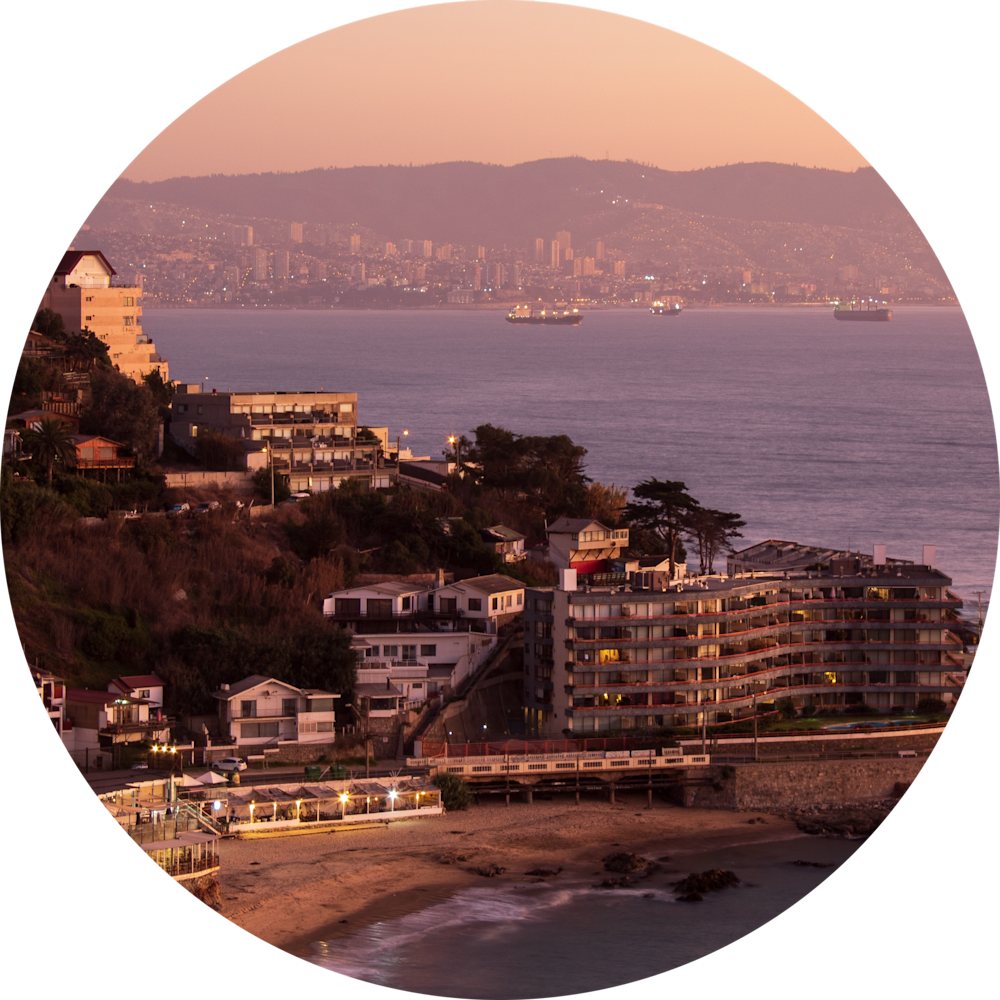
FERNWAYER'S VALPARAISO ESSENTIALS
Our essential travel experiences in Valparaíso are curated to show that the seaport is worthy of more than a day trip from Santiago. These are the most authentic tours in Valparaíso, hosted by passionate locals.
Our experiences go beyond the standard point-and-click tours – they even venture beyond those 42 hills. As a living canvas of artists and revolutionaries, the street art of Valparaíso changes almost as often as the tides. Our Experience Makers, many of whom are artists themselves, stay one step ahead and take it as their duty to be informed of new installations. The same goes for food experiences and cultural encounters; our porteño partners want to share the latest foodie openings and the freshest perspectives on popular culture and design. They want to tell you about little-known wineries doing big things in the field of viniculture.
Explore our essential Valparaíso tours below and browse all Valparaíso experiences here.
MAKE THE MOST OF YOUR TIME
Fernwayer’s Valparaíso Journeys—suggested itineraries, designed by us, booked by you—are anchored in our curated experiences.
Just one day in Valparaíso? Brush up on the city’s past on a walking tour of three historically significant barrios and spend time with local makers connecting with porteño and Chilean culture through art. With three days in Valparaíso, you can roll up your sleeves and make art alongside a local artist who uses creativity to share history, mythology, and culture. Learn to make beloved family dishes and experience the simple joy of sobre mesa. Experience the top sights of Valparaíso from the unique perspective of photographers and architects. Five days in Valparaíso allow for exploration of the wider Fifth Region. Spend a day exploring the palaces of Viña del Mar, taking in Reñaca’s windswept coves, and roaming the Dunes of Concón. Consider visiting Pablo Neruda's Isla Negra residence on the Poet’s Coast and checking out the wineries of the Casablanca Valley.
The Human Edit
Need help planning your trip? A Fernwayer curator takes your preferences and designs a custom travel itinerary that works. This is human-led travel planning — by someone who understands the art of travel itinerary design — built around your dates and preferences. Each personalized itinerary uses Fernwayer experiences as anchors and complements them with recommendations for flights, hotels, restaurants, and self-explore ideas.
FOLLOW YOUR PASSIONS
If walking tours always put a spring in your step, come explore the nooks and crannies with a local guide on one of our culture tours. If you’re curious about arts and crafts, our arts tours are a hands-on and insightful introduction to Valparaíso. If you’re always thinking about your next meal, you’ll find yourself in excellent company on our food and drink tours.
Each experience is tied to a place, led by locals, and made for travelers who want more than just a view.
Culture Tours
Discover the Chilean Capital of Culture with premium culture tours designed to capture the daily rhythm of a seaport-turned-arts center. Scratch below the surface of the murals of Cerro Alegre and Cerro Concepción with a street artist and a Sommelier who seasons his commentaries with local eats. Pry on everyday life on a Valparaíso walking tour spotlighting the oft-overlooked Barrio Puerto where vendors flog fresh produce from land and sea. Go off piste in Playa Ancha where a local photographer demonstrates the contrasts of Valparaíso. Fall agog as an architect connects the dots between place and people, past and present.
Arts Tours
Art bursts from every corner in Valparaíso and the best way to experience this city of painters and poets is at the side of a local creative. Pick up your pencil and appreciate the city’s architectural brilliance while sketching rickety funiculars and poring over every contour of Baburizza Palace. Avoid congested spots on a sensory photography tour of Cerro Alegre and Cerro Concepción’s lesser-known passageways. Venture to the wildlife haven of Concón where you’ll craft a keepsake by hand while the Pacific Ocean roars in the background. Sip pisco sour on a private tour of an independent gallery managed by a community of graffiti artists and coppersmiths.
Food and Drink Tours
Inhale the flavors of Chile’s Fifth Region with culinary experiences where nourishment runs deeper than what’s served on the plate. In place of anonymous restaurants, you’ll experience the warmth of sobre mesa in the home of a Porteño resident – preparing a dish from scratch while learning how modern gastronomy honors Indigenous recipes and plucks influences from immigration. Partake in the beloved weekend custom of asado chileno and you’ll rethink your own barbecue game. Visit the wineries of the Casablanca Valley with a private Sommelier guide who will awaken your senses with blind tastings and adventurous pairings.
NEIGHBORHOOD GUIDE
Valparaíso, capital of the Valparaíso or Fifth Region of Chile, is spread over 42 hills. Most of the touristic appeal centers on the hills rising above the port area. The flat part of Valparaíso around Plaza Sotomayer, Prat Pier, and Plaza Echaurren is known as “El Plan”. Funiculars connect this lower region with the popular hills of Cerro Alegre, Cerro Concepción, and Cerro Artillería. For higher hills, such as Cerro Cárcel (home to Valparaíso Cultural Center) and Cerro Florida (location for La Sebastiana), you may wish to hail an Uber and return on foot.
Where to stay? Opt for a boutique hotel in the tourist center of Valparaíso or stay near the beach in one of Viña del Mar’s luxury hotels. Best places to stay? Cerro Alegre. The “Happy Hill” rises above the seaport and is awash with color and bohemia. Cerro Concepción: Neighboring Cerro Alegre, Cerro Concepción is where Valparaíso’s notable buildings and promenades stand. Viña del Mar: Valparaíso’s twin city is a 15-minute drive. Bounded by Avenida San Martín and Libertad, Poniente is a walkable neighborhood with 5-star hotels and excellent restaurants minutes from the beach.
For more neighborhood highlights, flip the cards below.
Valparaiso Neighborhood Guide
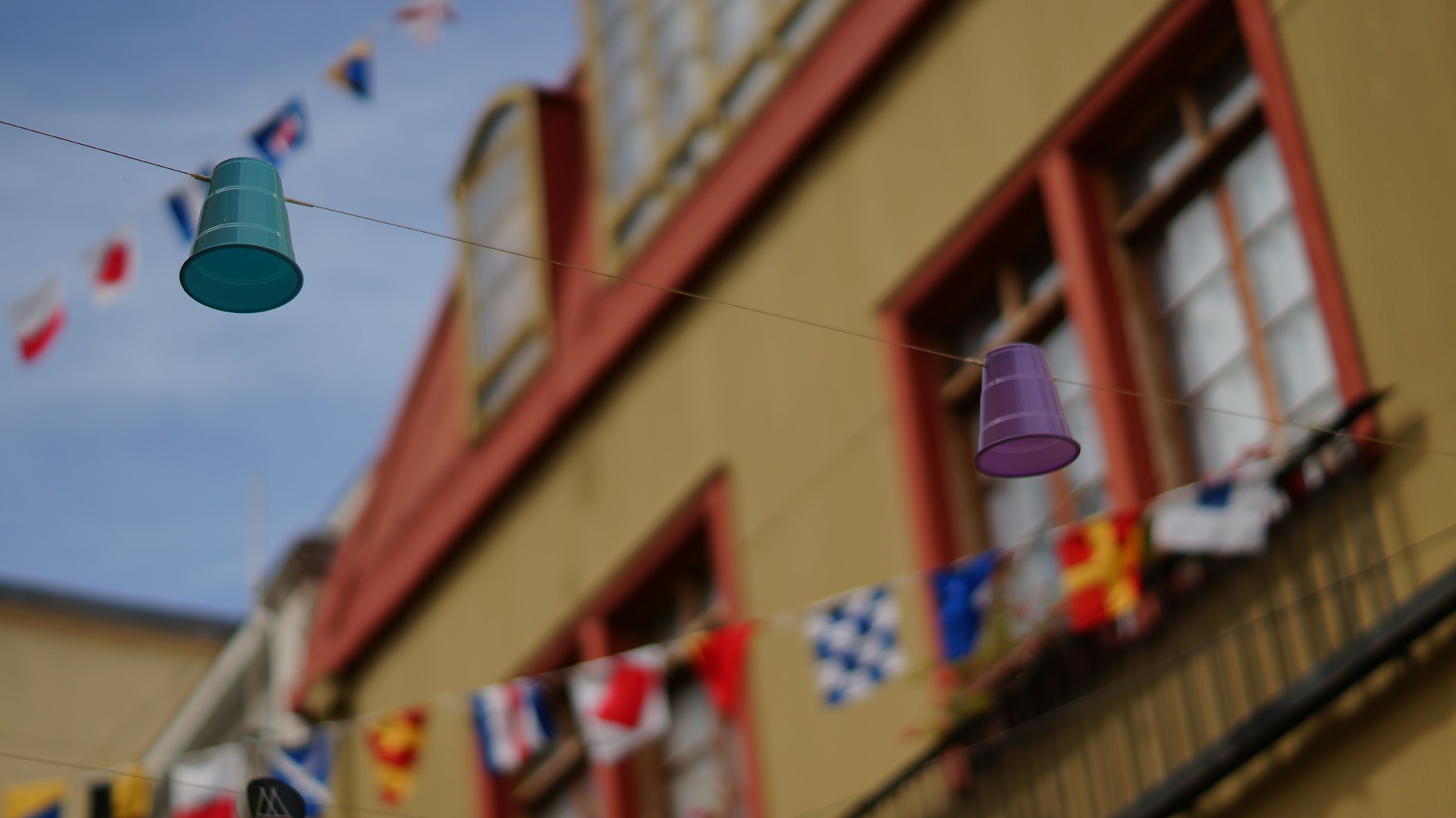
Cerro Alegre
Who wouldn’t want to spend time in a barrio known as Happy Hill? Cerro Alegre is the spirit of Valparaíso, where street art decorates every brick, bench, lamppost, and drainpipe. Save your legs by letting the Reina Victoria funicular carry you up the hill, then take a stroll down Paseo Dimalow, savor the views from Templeman, and marvel at the monumental cemetery. The Valparaiso Cultural Park, a repurposed prison, is a short walk from Cerro Alegre. Recommended experience: Valparaíso: Exposing Contrasts
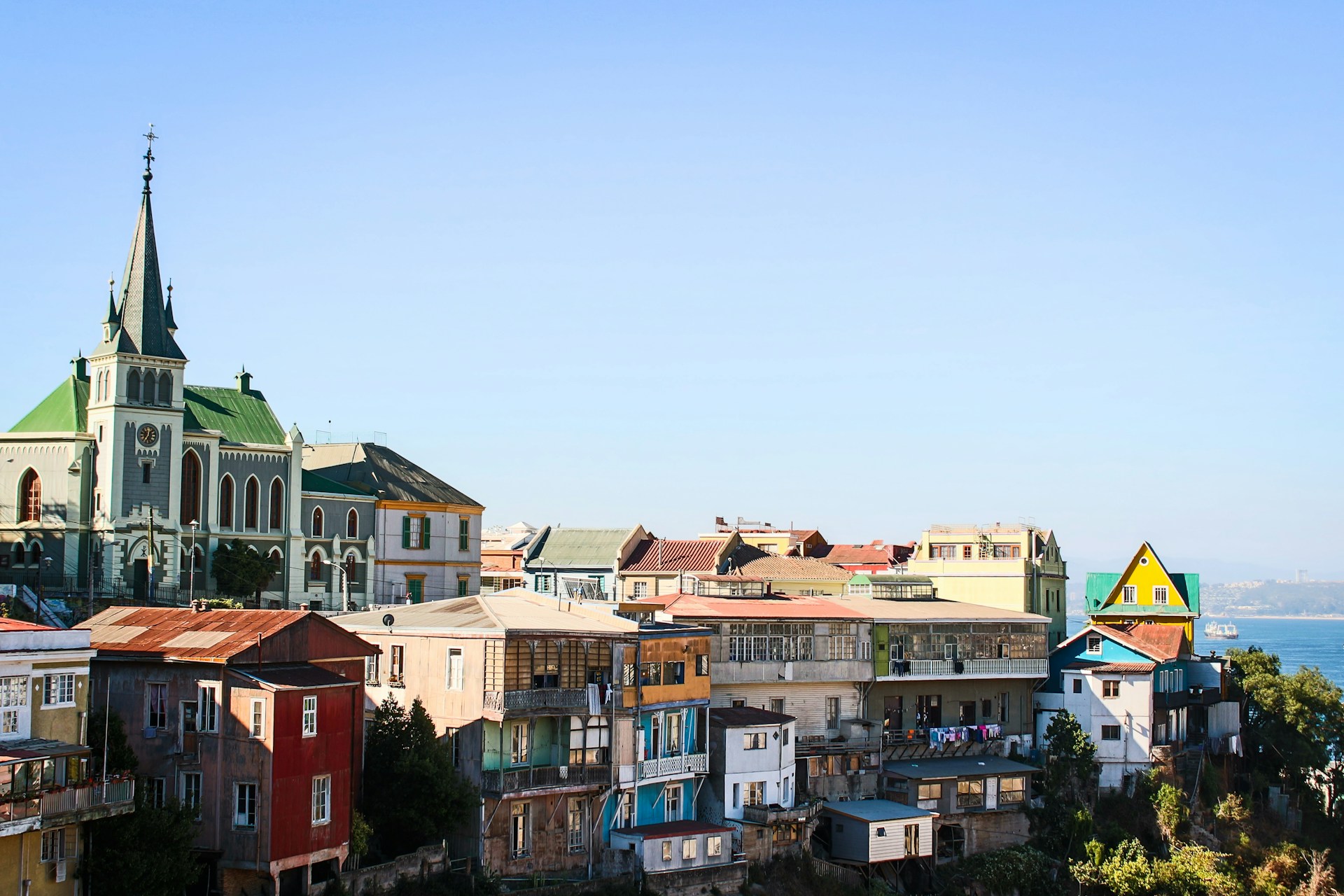
Cerro Concepción
Sister of Cerro Alegre, Cerro Concepción contains the top historic and cultural attractions of Valparaíso. This is where you’ll find Baburizza Palace, the recently unveiled Immigration Museum, and the panoramic Paseo Yugoslavo. Track down the famous Red Door—and the even more famous slide—before stopping to sip a Pisco Sour at one of the many terrace bars. A short ride on the El Peral and Concepción funiculars shouldn’t be skipped. Recommended experience: Vignettes Of A City
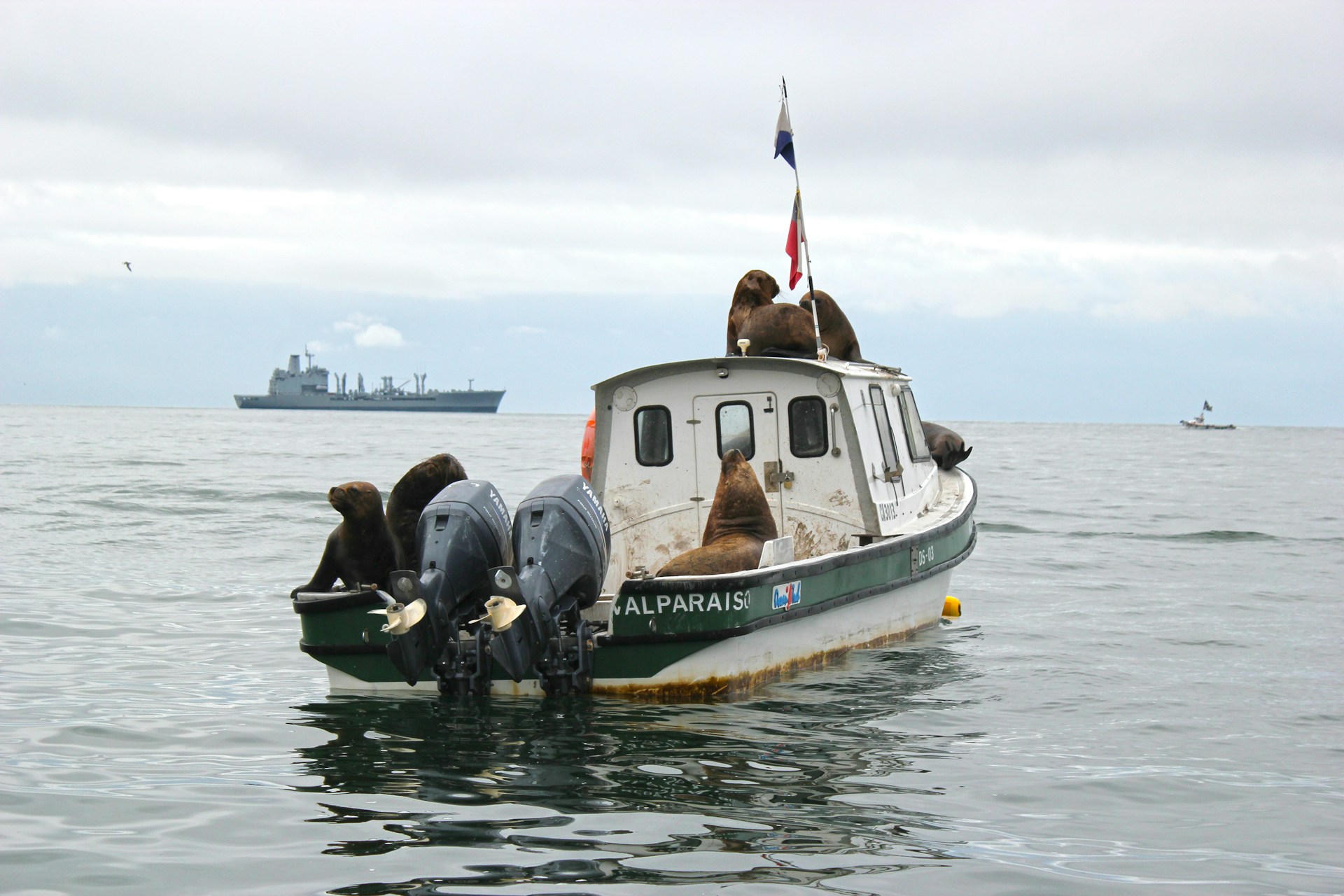
Barrio Puerto
Leaving the high ground for El Plan, Barrio Puerto is the Port District of Valparaíso. Walking through traditional streets like Serrano temporarily whisks you back to the 19th century when Valparaíso served as Latin America’s most important port. Take a stroll around the Mercado Puerto, a 100-year-old market currently undergoing a major revival project, and pass by Matriz Church, before ogling the naval headquarters in Plaza Sotomayer. Boat tours depart from Prat Pier, providing a lovely view of the coast and encounters with basking sea lions. As pickpockets operate in Barrio Puerto, additional care is advised. Recommended experience: Valparaíso's Living Legacy
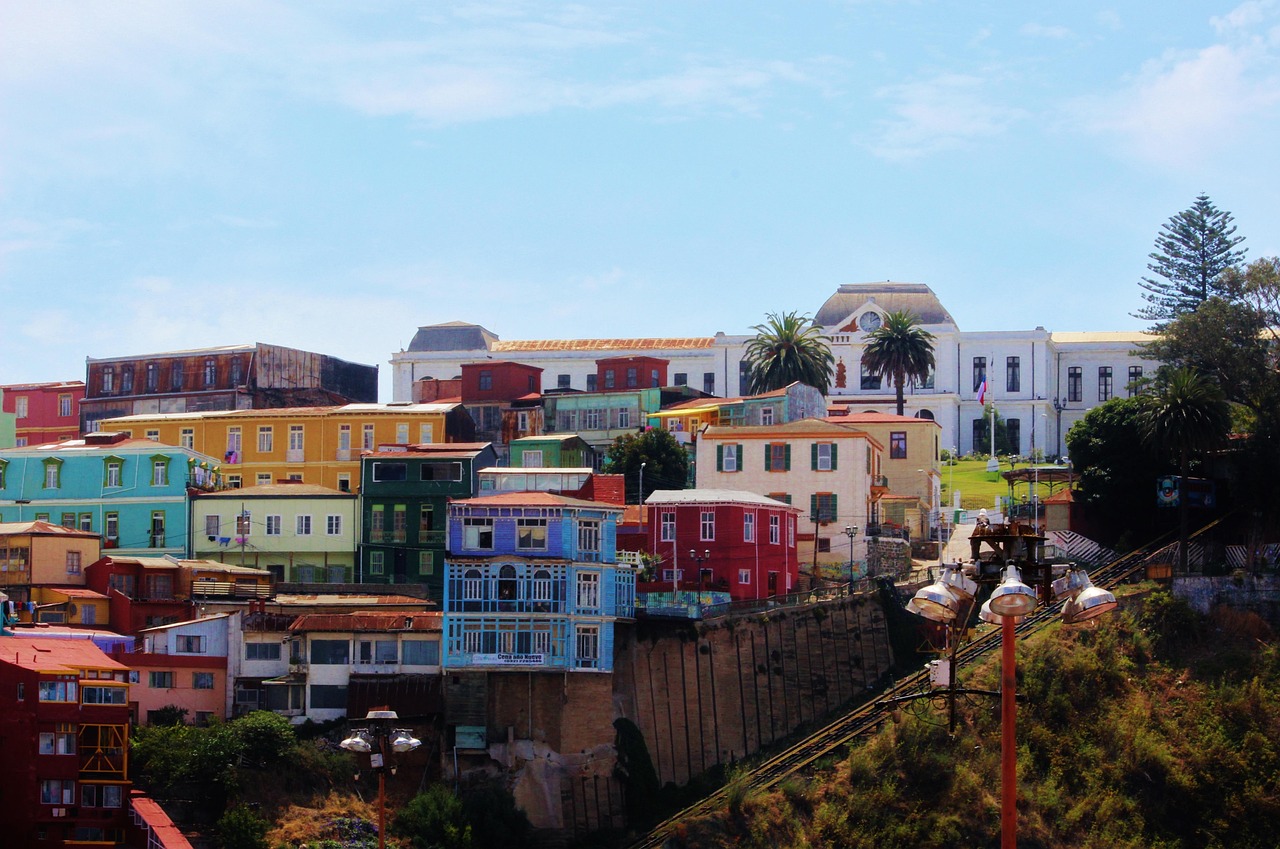
Playa Ancha
Translating to “Wide Beach”, Playa Ancha is a vast region west of the historic center of Valparaíso. Avenida Gran Bretaña designates the Great Britain sector of Playa Ancha, where you’ll find a string of dollhouse mansions built in the early 1900s. These days, the hilly district is the stomping ground of Playa Ancha University (UPLA) students and the Santiago Wanderers soccer team, who play at Elías Figueroa Brander Stadium. The part between Plaza Waddington and Paseo 21 de Mayo—location of the National Maritime Museum—is a joy to explore during the day as part of a tour. However, Playa Ancha should be avoided on evenings and match days. Recommended experience: Framing Playa Ancha
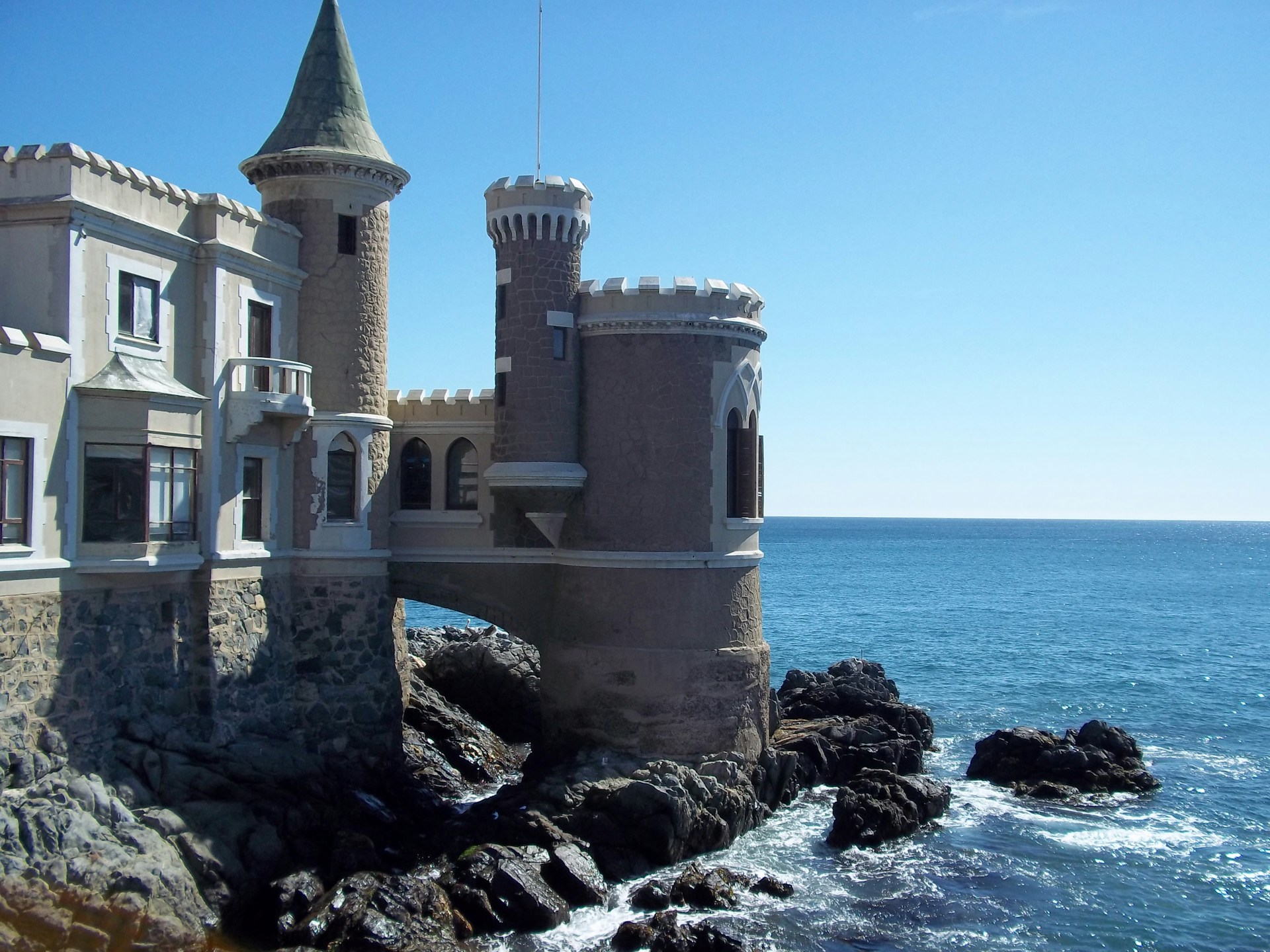
Viña del Mar
A city in its own right, Viña del Mar (the Vineyard of the Sea) is an upscale seaside resort with sandy beaches and lush green spaces, which earned it the nickname of the Garden City. Local landmarks include the Botanical Garden, the Fonck Museum, and Quinta Vergara—host of the Viña del Mar International Song Festival (Latin America’s largest music festival). Viña del Mar has a wider selection of hotels than Valparaíso, particularly in the Poniente neighborhood and along the Recreo seafront, and ranks as a safer base for a stay in the Fifth Region. Recommended experience: Art, Sea, Wine
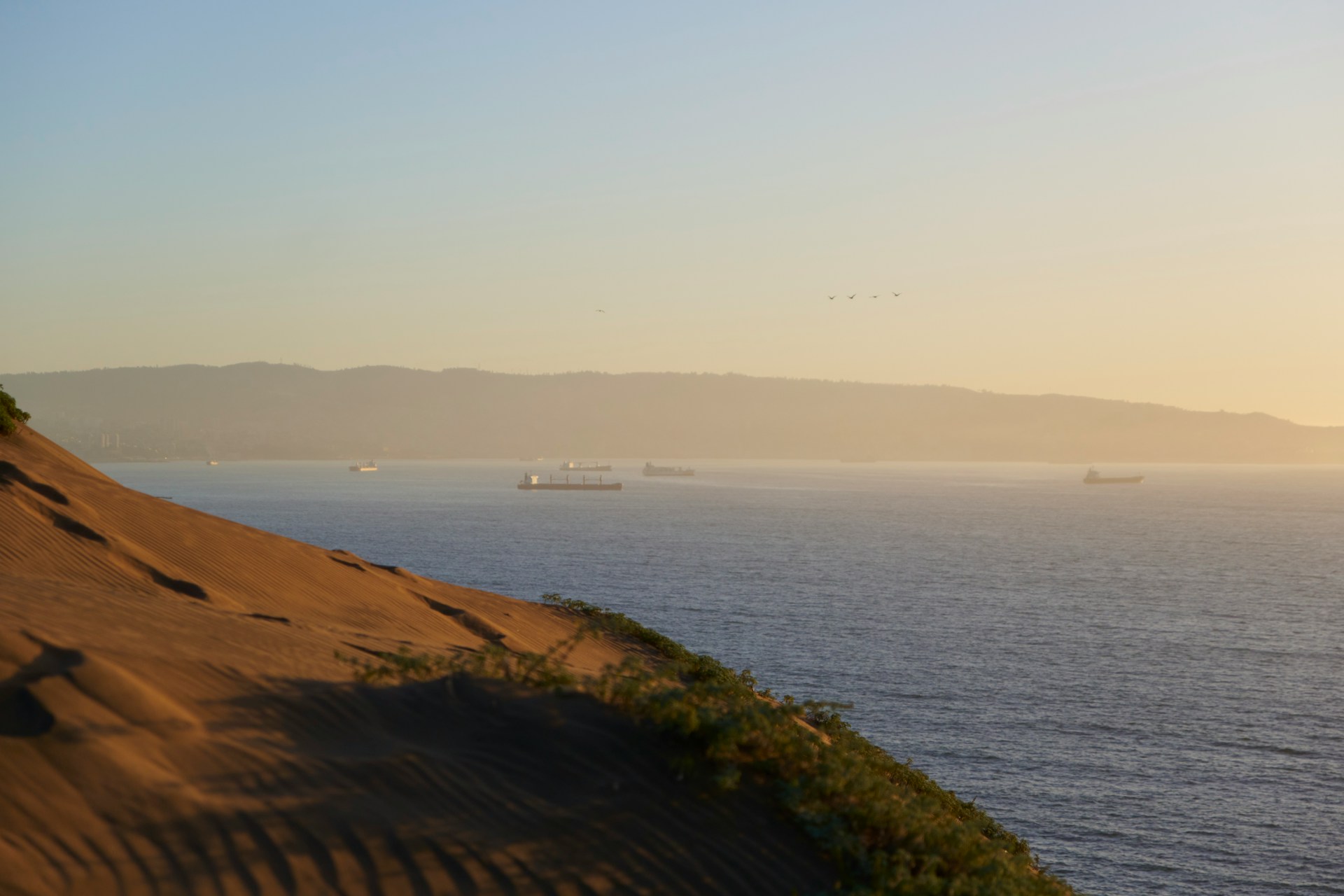
Concón
Not many travelers think to visit Concón. Those who do, are in for a treat. This is another city on Chile’s Pacific coast, standing just 10 miles north of Valparaíso, with a laidback atmosphere and surprisingly wild nature. The coastline is interrupted by fishing coves, such as Caleta Higuerillas, before culminating at the surfing mecca of Playa La Boca and the bird-studded Aconcagua River Wetland. The Dunes of Concón rise above the ocean, providing unparalleled sunsets in all four seasons, and the culinary experience is second to none. Recommended experience: Salt and Sand at Golden Hour
FREQUENTLY ASKED QUESTIONS
Take the pressure off your trip to Valparaíso by arriving as informed as possible. Our Frequently Asked Questions cover all the typical doubts – giving you clear, field-tested answers to help you prepare as thoroughly as possible.
Where should I base myself? If you only have one night in Valparaíso, it makes sense to stay in the city center. Cerro Alegre and Cerro Concepción are the safest neighborhoods in Valparaíso, with a handful of boutique hotels offering Chilean hospitality and bay views. If you’re staying for several nights, you might prefer to stay in Viña del Mar. Valparaíso’s twin city is lighter on sights but it does put you in easy reach of the beach and rates higher for safety and mobility. Linked by the Limache-Puerto train service and a scenic coastal road, Viña del Mar is just 15 minutes from Valparaíso and has a robust supply of 5-star hotels.
How do I move around effortlessly? In fact, getting around Valparaíso will always require some effort – as is the nature of a city perched on 42 hills! Riding one of the last-remaining funiculars is a must in Valparaíso: journeys cost less than a dollar but lines are to be expected on weekends and during summer. A one-line train service runs from the port of Valparaíso to Viña del Mar before continuing to the inland commuter towns of Quilpué and Limache. Buses known as micros hurtle around all corners of the city, although these services are often confusing for guests. We suggest using Uber or Cabify to get around distances too great to walk. Both apps have excellent coverage of Valparaíso and Viña del Mar and operate around the clock.
How do I get to Valparaíso? The seaport is 70 miles northwest of Santiago. Of several providers, Turbus is the most comfortable bus option – tickets may be booked online or in person at Pajaritos and Estación Central bus stations. Private drivers are readily available to transfer you from downtown and Santiago International Airport, providing a more relaxing experience as you cruise through the vineyards of the Casablanca Valley. Renting a car is an option and allows for more independence. However, driving these narrow and steep streets isn’t for the faint of heart, and parking in Valparaíso is severely limited.
Is Valparaíso safe? On the whole, Valparaíso is a safe city for visitors – provided you explore within the tourist-friendly neighborhoods covered in our guide. Pickpocketing and muggings are a growing concern in Valparaíso, with ladrones (skilled thieves) adept at plucking wallets from backpockets and snatching smartphones out of the hands of travelers blinded by the city’s charm. Protect your valuables by carrying a discreet bag, going light on the jewelry, and not flashing a wallet full stuffed with pesos on the street. The night carries more risk, so we advise not walking the streets alone in the dark. Uber works perfectly and is safe at all hours. Chileans tend to be protective towards foreigners and will often help with hailing services and seeing you safely into the vehicle.
Do I need to speak Spanish? Outside of the tourism sector, few Chileans speak English (around 10 percent of the population in total). Most hotels and major attractions have English-speaking staff, and most Valparaíso museums have audioguides in English. Uber drivers and restaurant staff are not guaranteed to speak English, but they will go out of their way to help you. Most menus in Valparaíso are only available digitally via QR codes, which may be translated by your browser. We recommend downloading DeepL or Google Translate as a means of communication. Note that Chilean Spanish is almost a language of its own. Chileans speak at the speed of lightning, punctuating their dialogue with Chilenismos (Chilean slang), adding “po” or elongating vowels for emphasis, and rounding off most nouns with “ito/ita”.
How far ahead do I need to book restaurants? If you have your heart set on specific restaurants, book a table a couple of weeks in advance (essential in January/February for popular places). Most restaurants take bookings via Instagram or WhatsApp.
What should I eat? Originating from sailors, Chorrillana is the signature local dish to try in Valparaíso. This sees a mountain of French fries topped with strips of beef, chunks of sausages, caramelized onions, and fried eggs. One plate is enough for two people, at least, and many restaurants carry vegetarian alternatives. Courtesy of the Humboldt Current, seafood in Valparaíso is almost impossible to beat. Look out for Machas a la Parmesana (baked Chilean clams), Chupe de Mariscos (seafood chowder), Caldillo de Congrio (fish soup), and Locos con Mayonesa (abalone with any Chilean’s preferred condiment).
When should I visit to avoid crowds? As with the rest of Chile, Valparaíso sees the bulk of its crowds during the summer months of December, January, and February. The lion’s share are cruise ship passengers or day trippers from Santiago, breaking up the journey between the Atacama Desert and Patagonia. Outside of summer, Valparaíso sees a steady and rarely overwhelming flow of travelers. The shoulder seasons of late spring (October/November) and early fall (March/April) bring the best weather. Winters are cool but dry, with misty mornings usually clearing for sunny afternoons.
How can I pay for items? Plastic is king in Chile. Restaurants, cafes, and shops prefer customers to settle by card, and most street artisans possess portable credit card machines. However, some street vendors only accept cash which means it is useful to carry a clutch of small notes for impulse buys. Casas de cambio will exchange major currencies for Chilean Pesos. Bear in mind that ATMs are few and far between in Valparaíso and cash withdrawals carry high fees (around $10 USD per withdrawal). When making a card purchase in Valparaíso, you usually need to specify whether paying by credit card (tarjeta de credito) or debit card (tarjeta de debito).
Should I leave a tip? Paying a tip of 10 percent is customary when dining in at Valparaíso's restaurants, cafes, and bars. The server will ask if you wish to pay the optional “propina” which can be paid by card or cash – most patrons tap it onto the card payment for ease. There’s no obligation to tip Uber drivers or housekeeping staff, but a small token of appreciation would be graciously received. As an all-inclusive marketplace, tipping is never expected on Fernwayer’s wallet-free experiences.
Where can I swim? Despite the coastal setting, swimming is prohibited on most beaches in Chile due to the Humboldt Current. Boards denoting “playa no apta para baño” stand on most beaches in the Valparaíso Region. It is possible to wade into the shallows, but swimmers are advised not to go further than waist-deep.
Should I worry about earthquakes? As Chile sits on the Pacific Ring of Fire, earthquakes are an almost weekly occurrence. Most of these are classified as temblors (small, insignificant earthquakes), with terremotos (big earthquakes) being rare. Chile is subject to robust building codes, which means tremors are buffered and the risk of damage is low. The impact of one Terremoto cocktail (fashioned from Pipeño wine, grenadine, and pineapple ice cream) is of much greater concern.
DISCOVER MORE OF CHILE
Explore Chile, city by city.
New Experiences Every Month!
We travel the world in search of transformative experiences outside the beaten paths. Subscribe to our newsletter to be among the first to know about new, exciting experiences around the globe.
FERNWAYER
We are reimagining luxury in travel as authentic connection, immersive storytelling, rare access, and a spirit of curiosity through curated, exclusive, and hard-to-arrange experiences.